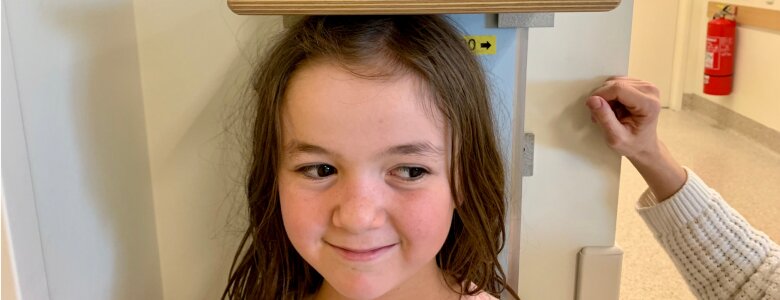There are over 300 different conditions that can cause dwarfism, but achondroplasia is the most common of them. Up to 1 in 15,000 people in the world are affected by it. Those affected have an average adult height of 131 centimetres (4 ft 4 in) for males and 123 centimetres (4 ft) for females, and suffer an increased risk of multiple health conditions.
There may soon be a drug to treat this condition.

Current treatments for achondroplasia (like surgery) are invasive, risky, and only address the symptoms of the condition, not the underlying cause. Vosoritide is an experimental drug that aims to treat the root of the problem. The treatment uses something called a C-type natriuretic peptide, which has been linked to skeletal growth and muscular relaxation.
In a recent study, the therapy was trialed on 121 children from Australia, Germany, Japan, Spain, Turkey, the USA, and the UK. The children, aged 5 to 14, were split into two groups: one received a vorositide injection, while the others received a placebo. The trial was also double-blind: neither the participants nor the doctors knew who got the real drug and who got the placebo, to eliminate any type of interference.
The 60 children who received daily injections of vosoritide grew an average of 1.57 cm per year more than the children who received placebo. This almost brought them in line with their typically developing peers. However, the trial did not significantly improve the children’s proportion ratios between their upper and lower bodies.
Paul Cohen and Elizabeth Ryan’s daughter, Sarah, was one of the study participants. Sarah was born with achondroplasia and she was one of the very first patients enrolled in the trial and the family was thrilled with the results.
“During the trial we’ve seen Sarah grow up at the same rate as her friends. She can now join in bike rides with her friends, and loves being allowed on our local waterslide,” Mr. Cohen said.
Professor Ravi Savarirayan of the Murdoch Children’s Research Institute (MCRI), who spearheaded the project, is very optimistic about the results.
“This drug is like releasing the handbrake on a car, it lets you get up to full speed instead of having to drive with the brakes on.”
“We know that beyond the cold hard facts and figures around growth rates and bone biology, we have hope that a treatment can improve kids’ health outcomes, social functioning and increase access to their environments. Anecdotally, our patients tell us they now are able to do more stuff like climbing trees, jumping rocks and being more independent generally, which is specific to their experiences.”
As far as we are aware, this is the first drug to show results of this kind. The trial, however, was not without issues. A total of 119 out of the 121 patients had at least one adverse event, though none of these serious events was thought to be caused by the vosoritide treatment. The children will be followed to see what height they will reach and whether or not they will suffer any other effects.
BioMarin Pharmaceutical, the company which developed the drug, is already chasing FDA approval. A randomized, phase 3, double-blind trial with positive results is always a good sign, but the FDA has already stated in the past that these sorts of drugs require two-year controlled trials in different age groups, which BioMarin it doesn’t have.
If the treatment is indeed confirmed to be safe and effective, it’s groundbreaking — it’s a way to treat a condition once thought untreatable. The treatment would only work on children whose growth plates are still open.
It’s also worth noting that some people with achondroplasia (as well as parents of children with the condition) don’t see it as something that should be ‘cured’ and consider that it doesn’t need any treatment. Still, aside from the stunted growth, the condition is associated with a number of other health problems. Even if this treatment receives approval and is effective, it should of course only be administered to people who want it and not be used as a blanket treatment.
Edit: The initial version of the story stated that the FDA was planning to hold an advisory committee meeting to discuss the application, which was later corrected.









